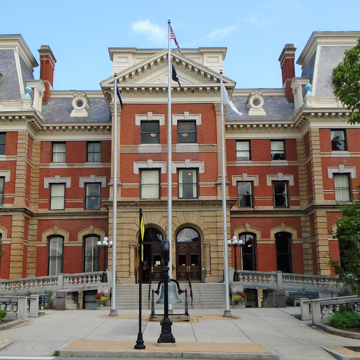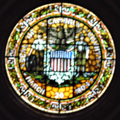The Cambria courthouse is one of six courthouses Milton Earl Beebe (1840–1922) of Buffalo designed in Pennsylvania and New York. Its French Renaissance Revival appearance with the stone quoins and a slate mansard roof echoes the Warren County Courthouse (
WA1) that Beebe designed five years earlier. Both courthouses have similar stonework surrounding their main entrances and had similar cupolas, although Cambria's was removed soon after construction. In 1913, James Riely Gordon (1863–1937), educated in San Antonio but with a national practice out of New York City, was engaged to enlarge the building. He had designed nearly seventy courthouses and government buildings around the country. Work was delayed until 1916 due to World War I. The additions are
You are here
Cambria County Courthouse
1880–1882, Milton Earl Beebe; 1913–1924 additions, James Riely Gordon. 200 S. Center St.
If SAH Archipedia has been useful to you, please consider supporting it.
SAH Archipedia tells the story of the United States through its buildings, landscapes, and cities. This freely available resource empowers the public with authoritative knowledge that deepens their understanding and appreciation of the built environment. But the Society of Architectural Historians, which created SAH Archipedia with University of Virginia Press, needs your support to maintain the high-caliber research, writing, photography, cartography, editing, design, and programming that make SAH Archipedia a trusted online resource available to all who value the history of place, heritage tourism, and learning.




















